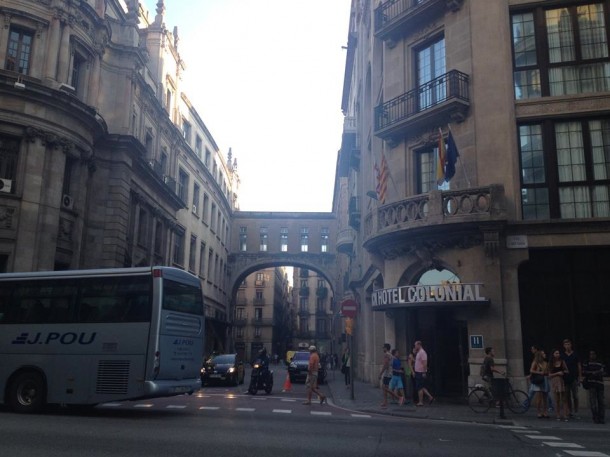BARCELONA, SPAIN. Nestled in a narrow maze of streets sits El Barri Gòtic, Barcelona’s Gothic Quarter, within the centre of the old city. Restored in the 20th Century, today the cobbled streets, medieval style squares, and roman architecture draws and mystifies locals and international tourists alike. And yet, colorful graffiti also sprays the 13th century walls, reminding visitors of the culture permeating the neighborhood today.
Stretching from La Rambla to Via Laietana, Barcelona’s Gothic Quarter boasts the same attractions as a complete city would, but within a much smaller space. Cafés with outdoor umbrella seating fill the mini plazas. Parents enjoy pitchers of sangria, while children lick dripping gelatos and chase after one another. Clothing boutiques, artisan shops, bars and restaurants line the streets, and modern troubadours serenade passersby.
While aimless wanderers will find pleasure in the Barri, those looking for more structure will find plenty to do outside of shopping and eating. Free walking tours of the area give visitors the chance to understand the history behind the beauty, one that was once occupied by Muslims, Jews, and Christians alike.
The importance of the area’s religious history can be felt at the Catedral de Barcelona where construction first began in 1298, and continued for an estimated 150 years later. With its façade restored between 2004 and 2012, the preservation of the site is flawless, bringing today’s visitors back to the ancient Roman Empire. Daily masses are also held at the Church for those looking for a more divine experience.
The Gothic Quarter is also home to some of Barcelona’s most renowned museums. Museo Picasso de Barcelona, the Picasso Museum, located in the heart of the Quarter, houses over 4,000 original Pablo Picasso masterpieces, and students between the ages of 18 and 25 get free admission. Museu d’Història de Barcelona, commonly referred to as MUHBA, Barcelona’s City History Museum, focuses on the city’s heritage, perfectly preserving its ancient Roman ruins and artifacts. Admission gives visitors access to MUHBA sites throughout the Quarter, including Barcelona’s Jewish Quarter, El Call, and the Temple of Augustus.
El Barri Gòtic appeals to all senses – the gastronome, the artist, the historian, the kid with sticky fingers and a churro. A visit to Barcelona’s famous Gothic Quarter will leave all visitors captivated and planning their next trip back.

